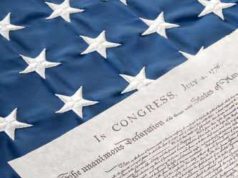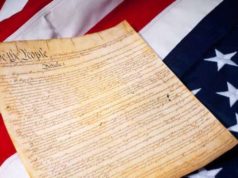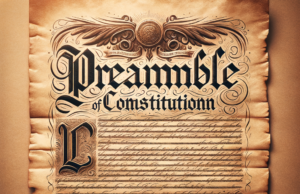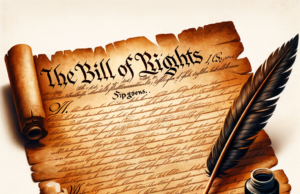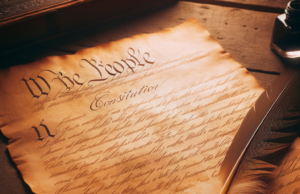Table of Contents
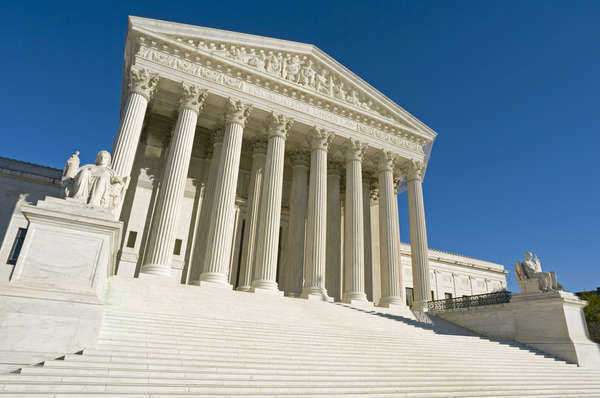
Federalism in the United States: Dividing Power Between Central Government and States
Federalism is a unique and defining feature of the United States Constitution. It is a political system that divides power between the central government and individual states, giving both levels of government certain powers and responsibilities. In this article, we will explore the concept of federalism in the United States, examine the roles played by the federal and state governments, and discuss the advantages and challenges of this system.
The Concept of Federalism
Federalism is a political system in which power is divided between a central authority and constituent political units, such as state governments. In the United States, this system is enshrined in the Constitution, which specifies the powers of the federal government and reserves all other powers to the states under the Tenth Amendment.
The Roles of Federal and State Governments
Under federalism, the federal government is responsible for:
1. National defense, international relations, and foreign policy
2. Coining money
3. Regulating interstate commerce
4. Enforcing the country’s laws
On the other hand, the states hold significant power over:
1. Public education and other public services
2. Law enforcement, including the prosecution of non-federal crimes
3. The regulation of industries and businesses that operate within their borders
4. The maintenance and management of infrastructure
The Advantages of Federalism
Federalism provides several advantages to the United States, including:
1. Promoting local decision-making: Because states have more direct control over many aspects of daily life, they are often better able to respond to local needs and preferences. This can lead to more effective and efficient governance.
2. Protecting individual rights: Federalism can protect individual rights by ensuring that power is dispersed and not concentrated in a single entity or branch of government, preventing abuses of power.
3. Encouraging experimentation and diversity: Federalism allows states the autonomy to experiment with different policies, programs, and laws, promoting innovation and diversity within the national system.
The Challenges of Federalism
Although there are many advantages to federalism in the United States, it is not without its challenges. Some of these include:
1. Incoherence and inconsistency: Federalism creates a complex patchwork of laws and regulations that can vary widely between states, leading to confusion and difficulty in navigating the legal system.
2. Corruption and special interests: The dispersion of power under federalism can lead to corruption and special interests, especially at the state level, where there is often less transparency and accountability than at the federal level.
3. Inefficiency and duplication: Federalism can lead to inefficiencies and duplication as each state is responsible for managing its own affairs, often with varying levels of efficiency and efficacy.
Conclusion
Federalism is a defining characteristic of the United States Constitution, dividing power between the federal government and the states. While there are many advantages to this system, including local decision-making, individual rights protection, and diversity, it is also not without its challenges, including incoherence, corruption, and inefficiency. Nonetheless, federalism remains an essential component of American democracy, ensuring that power is dispersed and that individual rights are protected.
Amongst the many critics who voiced their grievances against the Articles of Confederations, few were more prominent than Federalists Alexander Hamilton, James Madison, and John Jay. The Federalists were primarily dissatisfied with the governmental structure – or lack thereof – that was set forth in the text of the Articles of Confederation.
Written by a committee appointed by the Continental Congress and ratified soon after in 1781, the Articles of Confederation established a form of government that retained no power over matters involving any of the 13 individual states, and thereby ultimately allowing each of the 13 states of the union to act as separate, sovereign entities. The central government was given power to organize and control both a national military and postal service. The central government was also granted the power to: regulate the coining of currency, manage foreign relations, and regulate westward expansion. However, the Federalists ascertained that the nature of any ‘national’ power allowed to the central government was illusory due to the fact that no nationalism existed as a result of the sovereignty of each individual State.
Federalist Alexander Hamilton stated that despite the presence of a national militia, the states were allowed to maintain their own respective State militias, and as a result, any or all State funding would be invested in the interests of that individual State – in this case, the State militia – before it was invested in any national interests.
The central government was neither permitted to enforce any legislation onto any of the 13 states of the union nor levy any taxes from them. Although the central government was able to present new and existing laws to which each of the 13 states were suggested to adhere, the legislative body of the central government was powerless to enforce them to do so. In addition, funding from the individual states could be requested by the central government. However, the states possessed the power to choose whether or not they were willing to comply. This dynamic invariably allowed the individual states to translate the central government’s request for funds into suggested donations.
Eventually, as the Federalists had predicted, the central government was teetering on the brink of bankruptcy. With its complete financial insolvency quickly approaching, the central government began to print money in a reckless manner in order to both support the national military, as well as maintain the general upkeep of the nation. Adequate funding from the states rarely, if ever, came. As a result, paper currency was devalued to such a profound extent that many members of the merchant classes, which also included laborers and farmers, were forced into foreclosure and/or debtors’ prison.
Many of the states were forced to resort to similar desperate financial measures, which included the escalation of their tax and tariff rates. When these erratically-adjusted commercial rates became unmanageable by the merchant class, debts escalated, riots ensued, and the United States had quickly found itself in the midst of economic devastation.
The Federalists were well-aware of the blatant fundamental inefficiencies, both legislative and financial, which existed in a gubernatorial model that denies a central government sufficient legislative power – the same governmental model established in the Articles of Confederation. The Federalists penned The Federalist Papers in reaction to the disarray caused by the Articles of Confederation with the hopes of persuading the citizens of the United States to adopt the Constitution.







